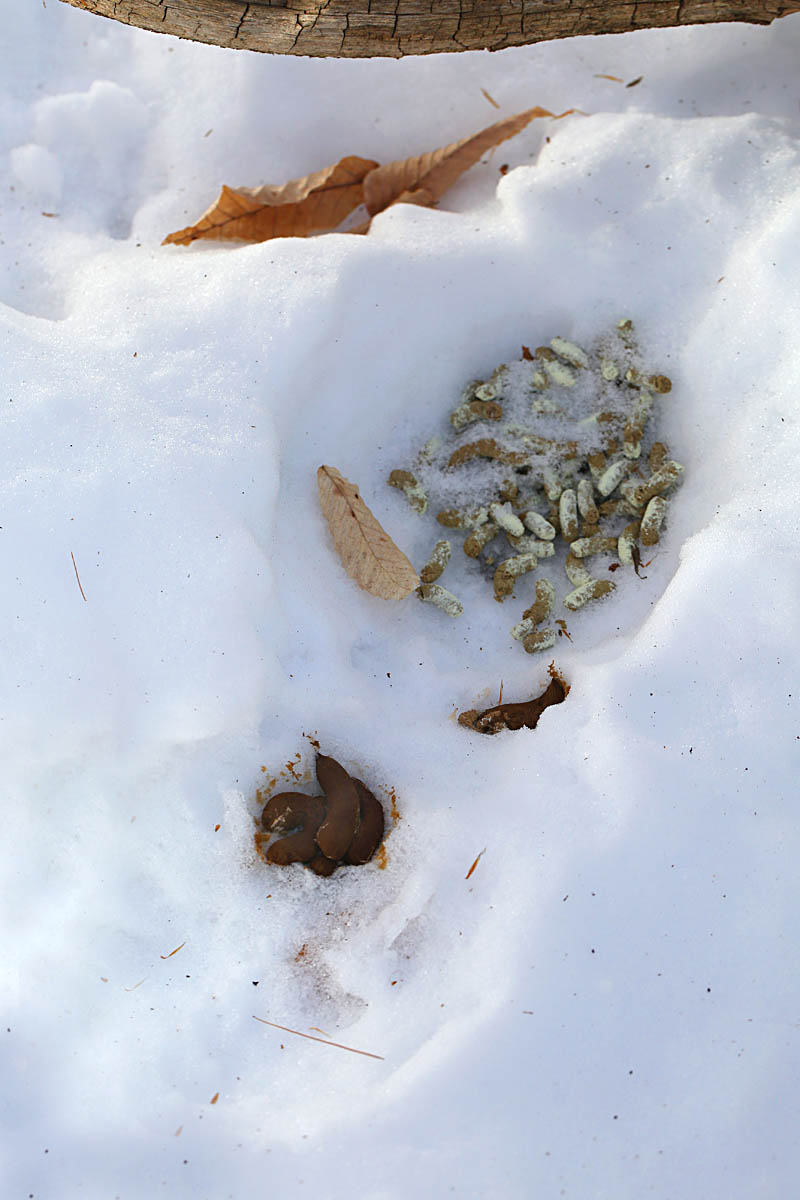Ruby-throated Hummingbird Nestling: Defecating Outside Nest

For the first day or two the mother hummingbird removes her chick’s fecal sacs, but soon thereafter the nestling is able to defecate outside of its nest, saving its mother considerable work and energy. You can anticipate this activity by noticing when the chick raises its rear end up over the nest to get in position.
Naturally Curious is supported by donations. If you choose to contribute, you may go to http://www.naturallycuriouswithmaryholland.wordpress.com and click on the yellow “donate” button.
Avian Evacuation

To start with the basics, both the excretory anatomy and the consistency of bird droppings are different from those of most mammals. Birds have one opening, a cloaca, which serves as their intestinal, reproductive and urinary tract. Everything from mating and laying eggs to voiding waste takes place via the cloaca.
Instead of releasing waste as urea dissolved in urine, as we do, birds excrete it in the form of uric acid, which is the white liquid we associate with bird droppings. Why is it white instead of brown? This is due to the biochemical reactions that take place in processing the waste so it can be safely excreted with minimal water loss.
If you look carefully at a bird’s droppings, you’ll usually find a small dark solid blob amongst all the white uric acid. Both acid and solid waste are evacuated from the same opening at the same time. Because they come from two different bodily systems, they don’t have much time to blend.
Most people are not great fans of bird droppings due to the damage (and mess) they can cause. However, some ingenious soul took advantage of this property and concocted a skin exfoliator for sale that consists of nightingale droppings, water and rice bran.
(This post is dedicated to my sister who didn’t quite believe I would actually write a post about this subject much less use this Snowy Owl photograph.)
Ruffed Grouse Unable To Seek Refuge in Snow Caves

Unlike much of the Northeast, central Vermont has only a few inches of snow on the ground. These conditions can affect all forms of predators and prey both negatively and positively, from exposed mice and voles to easily-satiated hawks and owls. In the case of Ruffed Grouse, which seek shelter on cold winter nights by diving into the snow, less than 10 inches of snow can spell disaster. In their snow caves they are hidden from view and well insulated (where it rarely drops below 20°F.). A lack of snow can be life-threatening for grouse if the temperature drops too low for too long. Unable to create a sheltered cavity in the snow, Ruffed Grouse bed down on top of it, often close to the base of a tree where there may be some shelter from the wind. Fortunately, most nights have not been extremely cold thus far this winter.
After the grouse departs in the morning, you often find scat where it bedded down. Grouse scat comes in two forms, one a dry, fibrous cylindrical pellet with a white-wash of uric acid at one end, and the other a softer, darker brown plop. The vast majority of a grouse’s diet (buds, twigs, leaves, catkins) goes directly through its digestive system and forms the dry, courser scat. Finer (and more nutritious) material such as the cambium layer of woody plants enters the caeca, two specialized pouches, before passing through the large intestine. The caeca contain bacteria which break down cellulose and produce the more digested, and therefore more liquefied, scat (see foreground in photo).
Naturally Curious is supported by donations. If you choose to contribute, you may go to http://www.naturallycuriouswithmaryholland.wordpress.com and click on the yellow “donate” button.


















What Other Naturally Curious People Are Saying